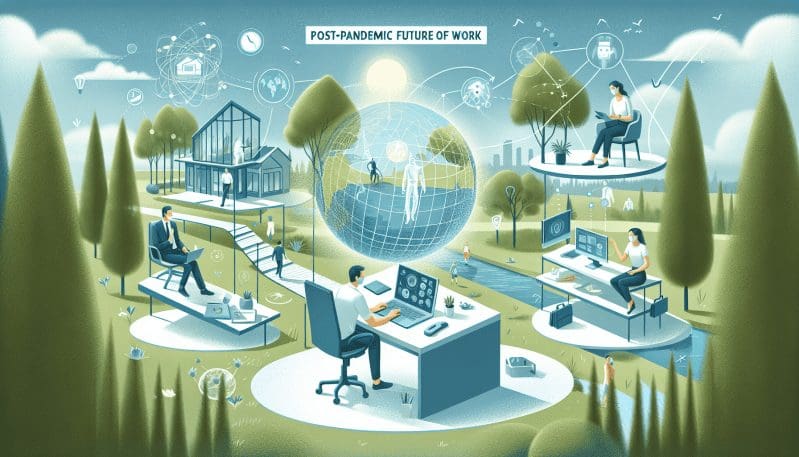As the dust settles on a world irrevocably changed by the COVID-19 pandemic, one domain has emerged at the forefront of discourse: the workplace. The pandemic has not only disrupted how we perform our jobs but has also triggered a transformation in the philosophy of work itself. At The Work Times, our pulse on the zeitgeist of work culture positions us to delve into the critical analysis of how New York businesses—epicenters of innovation and influence—are navigating the post-pandemic landscape.
The emblematic New York work ethic, once characterized by bustling offices and the nine-to-five grind, is undergoing a metamorphosis. The cataclysmic shift to remote work during the pandemic became an unintended global experiment in workplace flexibility. Now, as we inch towards normalcy, businesses are grappling with the challenge of sustaining the positive aspects of this shift—flexibility and work-life balance—against the backdrop of maintaining, if not enhancing, productivity.
In interviews with leaders from a variety of sectors—finance, tech, media, and healthcare—it’s evident that the transition isn’t simply about transplanting office work to the home environment. It’s a reevaluation of what productivity means in a changed world. Instead of equating presence with output, companies are recalibrating their metrics: setting clear objectives, establishing results-oriented work environments (ROWE), and utilizing digital productivity tracking tools. These methods are not without their controversies, as they raise concerns over worker privacy and the blurring lines between work and home life.
One tech CEO shared, ‘The key is to create a culture of trust. We’re investing in project management software to set transparent goals and to help our team stay on track, not to micromanage their every move.’ This sentiment was echoed across our conversations, with an emphasis on outcome over output.
While tools like Asana and Trello are gaining traction for workflow management, collaboration software like Zoom and Slack remain indispensable for fostering teamwork and connectivity. However, a finance industry leader noted, ‘It’s not just about the tools; it’s about how you use them. We’ve had to train our managers to lead remote teams effectively, focusing on communication and empowerment.’
The flexibility afforded in these new models is not lost on employees. The shift to remote work has been a boon for many, offering the freedom to manage their day-to-day lives more effectively. But it comes with its own set of challenges. One worker we interviewed expressed concern over a creeping ‘always-on’ culture: ‘It’s great that I can start later and handle personal stuff in the morning, but I find myself working odd hours to keep up. It’s a double-edged sword.’
Companies are mindful of these potential pitfalls. Many are introducing policies around ‘core working hours’ and ‘right to disconnect’ to combat burnout and ensure that flexibility doesn’t mutate into an erosion of work-life boundaries.
Moreover, remote work is just one aspect of flexibility. Progressive businesses are also exploring condensed workweeks, job sharing, and staggered shifts as ways to offer employees control over their schedules, without diminishing company-wide performance.
The sustainability of these new work models hinges on their impact on employee well-being and long-term business success. Will these flexible arrangements foster greater inclusivity, productivity, and employee satisfaction? Or will they introduce new stresses and challenges that undermine their benefits?
The Work Times invites you to join the conversation. As you reflect on the future of your own workplace, consider how these changes could shape your daily life and redefine what it means to be productive in a post-pandemic world.




























